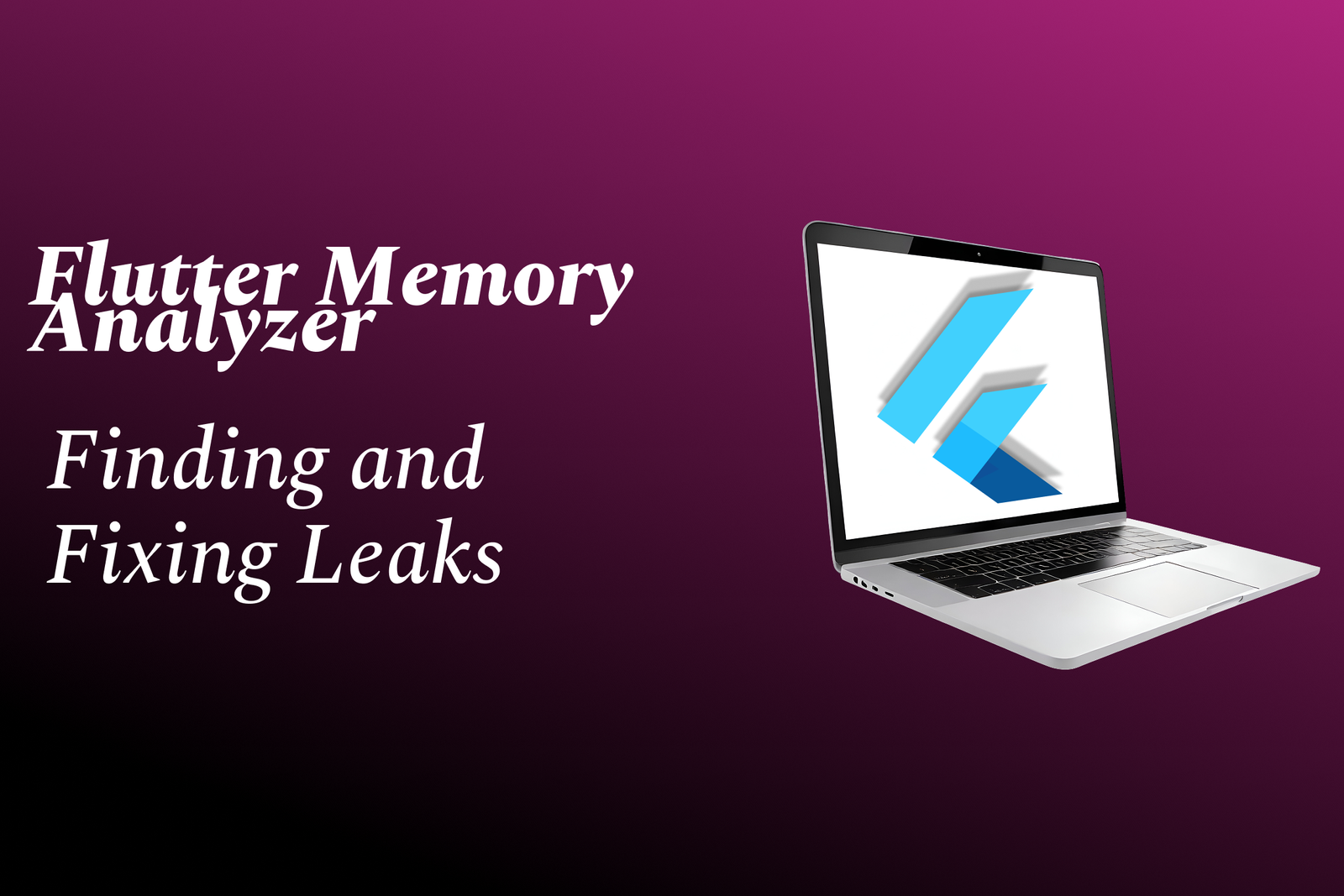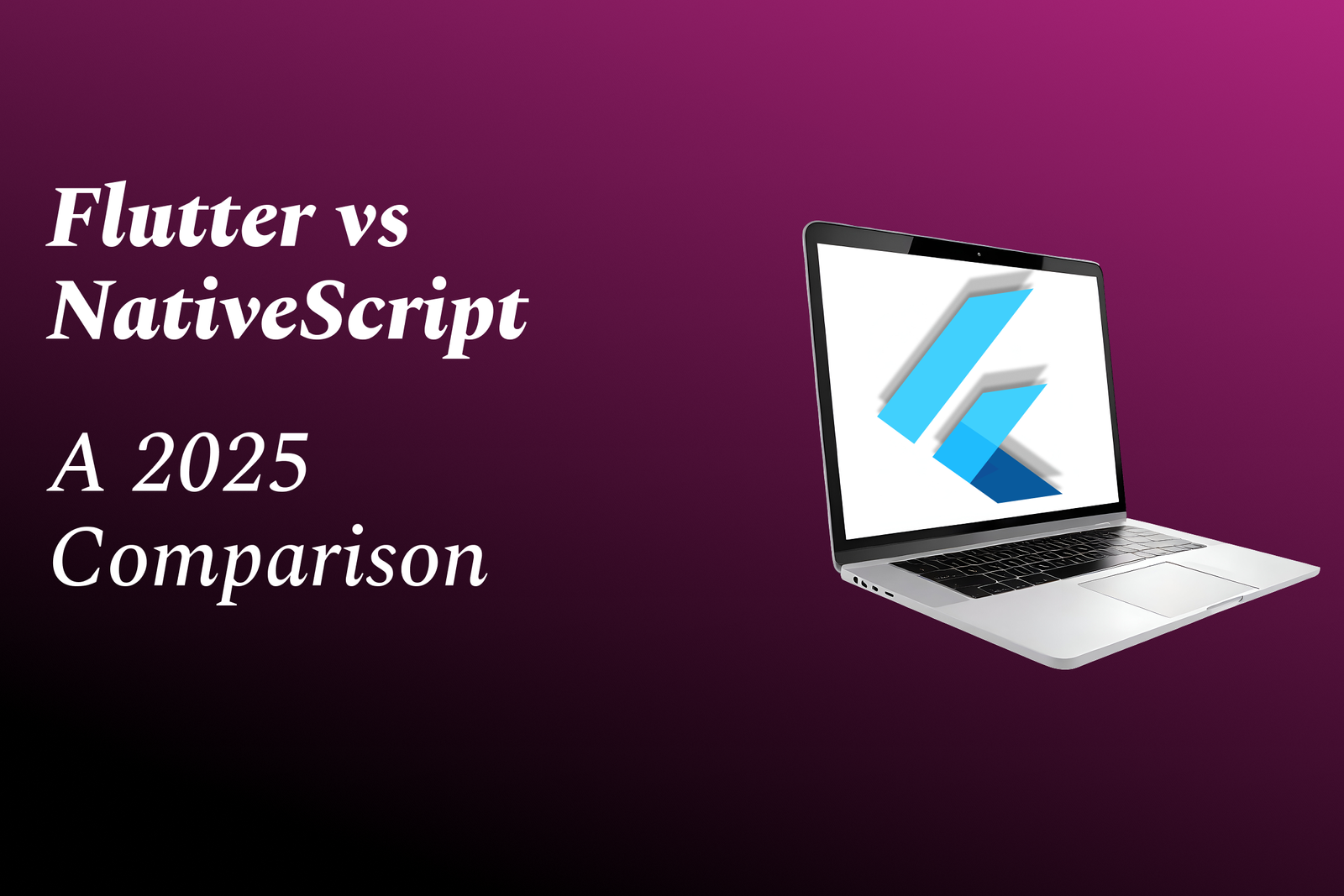Flutter Memory Analyzer: Finding And Fixing Leaks
Flutter Memory Analyzer is a practical toolkit and workflow—centered on Flutter DevTools’ memory profiler—that helps developers capture heap snapshots, track object allocations over time, and visualize retaining paths to quickly pinpoint memory leaks in Dart/Flutter apps. By comparing snapshots, inspecting allocation stacks, and identifying objects that remain unexpectedly reachable (for example, due to undisposed controllers, active listeners, or lingering static references), it reveals the root causes of leaks so you can apply targeted fixes like cancelling streams, disposing controllers, breaking unintended references, or using weak references. The result is fewer OOM crashes, lower memory usage, and more stable, responsive apps—critical for production-ready Flutter projects and JustAcademy’s hands-on certification courses.
Flutter Memory Analyzer: Finding And Fixing Leaks
Flutter Memory Analyzer is a focused workflow—built around Flutter DevTools’ memory profiler—that helps you capture heap snapshots, trace object allocations over time, and visualize retaining paths to quickly locate memory leaks (for example, undisposed controllers, active stream listeners, timers, or lingering static references). By revealing which objects remain unexpectedly reachable and showing the allocation stacks that keep them alive, it lets you target fixes like disposing resources, cancelling subscriptions, or breaking unintended references, which reduces OOM crashes and improves app responsiveness. This process is essential for production-ready Flutter apps and a practical skill emphasized in JustAcademy’s hands-on certification courses.
To Download Our Brochure: **https://www.justacademy.co/download-brochure-for-free
**
Message us for more information: **https://api.whatsapp.com/send?phone=919987184296
**
Flutter Memory Analyzer is a focused workflow—built around Flutter DevTools’ memory profiler—that helps you capture heap snapshots, trace object allocations over time, and visualize retaining paths to quickly locate memory leaks (for example, undisposed controllers, active stream listeners, timers, or lingering static references). By revealing which objects remain unexpectedly reachable and showing the allocation stacks that keep them alive, it lets you target fixes like disposing resources, cancelling subscriptions, or breaking unintended references, which reduces OOM crashes and improves app responsiveness. This process is essential for production ready Flutter apps and a practical skill emphasized in JustAcademy’s hands on certification courses.
Course Overview
Flutter Memory Analyzer: Finding and Fixing Leaks teaches practical use of Flutter DevTools memory profiler to capture heap snapshots, trace allocations, identify retaining paths, and fix leaks through real-world projects—leading to JustAcademy certification.
Course Description
Master Flutter memory profiling with JustAcademy's “Flutter Memory Analyzer: Finding and Fixing Leaks” — learn DevTools heap snapshots, allocation tracing, retaining-path analysis, and proven leak-fix patterns through hands-on projects, ending with a certification.
Key Features
1 - Comprehensive Tool Coverage: Provides hands-on training with a range of industry-standard testing tools, including Selenium, JIRA, LoadRunner, and TestRail.
2) Practical Exercises: Features real-world exercises and case studies to apply tools in various testing scenarios.
3) Interactive Learning: Includes interactive sessions with industry experts for personalized feedback and guidance.
4) Detailed Tutorials: Offers extensive tutorials and documentation on tool functionalities and best practices.
5) Advanced Techniques: Covers both fundamental and advanced techniques for using testing tools effectively.
6) Data Visualization: Integrates tools for visualizing test metrics and results, enhancing data interpretation and decision-making.
7) Tool Integration: Teaches how to integrate testing tools into the software development lifecycle for streamlined workflows.
8) Project-Based Learning: Focuses on project-based learning to build practical skills and create a portfolio of completed tasks.
9) Career Support: Provides resources and support for applying learned skills to real-world job scenarios, including resume building and interview preparation.
10) Up-to-Date Content: Ensures that course materials reflect the latest industry standards and tool updates.
Benefits of taking our course
Functional Tools
1 - Flutter DevTools — Memory and Performance panels, interactive heap snapshots, allocation timelines, and object retainers are covered in depth so students learn to capture snapshots, compare generations, and interpret dominator trees for leak root causes. Hands on labs show how DevTools ties into the Flutter Inspector and how to reproduce leaks deterministically in debug and profile modes. JustAcademy instructors demonstrate common leak patterns and use DevTools to step through object lifecycles, GC pauses, and allocation spikes. Students practice pruning retained sets and validating fixes by comparing before/after snapshots and GC behavior. Course exercises include scripted capture sequences that become reusable diagnostics for team workflows.
2) Dart VM Service / Observatory — The VM Service protocol is taught as the low level bridge for remote debugging, allocation sampling, and programmatic snapshot capture so students can automate deep analysis beyond the DevTools UI. Practical modules explain how to connect to the service, request allocation profiles, and stream GC/heap events for custom tooling. Learners write small utilities using the service API to extract allocation stacks and correlate them with source files. JustAcademy provides example notebooks and command recipes so students can reproduce techniques on emulators and real devices. Emphasis is placed on securely exposing the service during tests and disabling it for production builds.
3) Android Studio / IntelliJ Profiler — Students receive guided walkthroughs of the Android Memory Profiler, capturing heap dumps, viewing class histograms, and inspecting native vs Java/Kotlin vs Dart allocations when running Android builds. Labs compare Studio’s profiler output to DevTools snapshots, explaining how bridging technologies (Flutter engine and embedder) affect what is visible. Training includes capturing HPROF files, converting or correlating with Flutter heap data, and interpreting trends across devices. JustAcademy modules show how to reproduce leaks on Android specific flows and use Studio tools to focus on memory heavy interactions such as large image handling. Best practices are demonstrated for minimizing instrumentation overhead during long running tests.
4) Xcode Instruments — The course teaches the use of Instruments’ Allocations, Leaks, and Zombies templates to analyze iOS behavior, inspect native allocations from engine or plugin code, and correlate memory growth to Flutter side events. Students practice building and profiling profile/release iOS apps, capturing allocation stacks and symbolicated traces. Instructors explain bridging points where Swift/Objective C resources can be retained by Dart objects and how to spot those cross language leaks. JustAcademy provides lab exercises that reproduce common iOS specific retention problems (e.g., CADisplayLink, delegates) and validate fixes with repeatable Instruments traces. Guidance is included for proper symbolication and dealing with Bitcode or dSYM issues.
5) adb, dumpsys meminfo, and platform command line utilities — Practical sessions cover adb shell dumpsys meminfo, ps, top, and /proc inspection to quickly triage memory usage on Android devices when UI profilers are not available. Students learn to script periodic snapshots, parse RSS/VSS/heap sizes, and correlate OS level metrics with app level allocation events. JustAcademy labs emphasize lightweight monitoring approaches used in CI, on device smoke tests, and remote reproduction scenarios. Exercises teach how to capture memory under specific user flows and produce reproducible data for postmortem analysis. Tips include using adb to pull heap dumps and automating uploads for centralized analysis.
6) Perfetto and system tracing — The curriculum introduces Perfetto (and previously systrace) for capturing long running system and GPU/CPU traces to spot memory related stalls and background behavior contributing to leaks or retention. Hands on labs show how to record traces during complex interactions, filter by process, and overlay allocation events with frame rendering and input activity. Students practice extracting their app’s timeline markers (via dart:developer) into Perfetto to create correlated views between Dart VM events and system level activity. JustAcademy instructors demonstrate how to spot memory churn caused by frequent texture uploads, GC fragmentation, or background services. Labs include interpreting trace slices and extracting actionable diagnostics for fixes.
7) leak_tracker and Dart leak detection packages — The course covers Dart side leak detection libraries such as leak_tracker that instrument object lifetimes and produce reports of retained instances and stack traces. Students learn how to integrate these packages into debug builds, configure sampling rules, and generate reports during integration tests. Labs include creating small repro cases, interpreting leak_tracker output, and mapping reported allocations back to source code and widgets. JustAcademy provides templates for adding leak checks to test suites so teams can catch regressions early. The module also surveys alternative packages and trade offs in runtime overhead and signal fidelity.
8) package:developer, timeline events, and manual instrumentation — Training emphasizes using dart:developer APIs to add custom timeline events, allocation markers, and trace points that make complex flows visible in DevTools and Perfetto. Students practice instrumenting heavy operations (image decoding, serialization, plugin calls) to pinpoint where retained objects originate and to measure operation durations. JustAcademy exercises show how to add only the minimal instrumentation needed for diagnostics and how to remove or gate it for production builds. Examples include tagging allocations, marking GC sensitive zones, and emitting structured logs for later correlation. Learners also get patterns for creating reproducible scenarios that surface leaks reliably.
9) Heap snapshot analysis tools and pprof style workflows — The course teaches advanced snapshot inspection workflows including exporting snapshots, using pprof style analysis (where available), and automating dominator tree comparisons across releases. Students learn to parse large snapshots, filter by class or namespace, and run delta comparisons to identify growth between app states. JustAcademy labs include building small CLI tools that extract top retained types and generate human readable reports for code reviews. Techniques for trimming noise, grouping related allocations, and prioritizing fix candidates are emphasized. Participants get hands on practice converting snapshots into actionable bug tickets with reproduction steps and key traces attached.
10) Automated test harnesses and CI memory regression checks — Practical modules show how to create integration tests that exercise memory sensitive flows and capture heap snapshots or memory metrics as part of continuous integration pipelines. Students learn to write scripts that run profile mode tests, capture memory traces, and fail builds on predefined regression thresholds. JustAcademy provides example GitHub Actions/GitLab CI templates and artifact upload patterns to archive snapshots for manual inspection. Labs teach tuning test duration and sampling to avoid flaky results while still catching meaningful regressions. The module also covers alerting and triage playbooks when CI surfaces a memory increase.
11 - Crash and monitoring platforms (Sentry, Firebase Crashlytics) for OOM detection — The course explains how to use production monitoring tools to detect OOMs, high memory crashes, and outlier devices, and how to use those signals to prioritize leak fixes. Students practice mapping crash reports and stack traces back to suspect code paths and correlating those with historical memory KPIs. JustAcademy shows how to enrich crash context with custom breadcrumbs and memory tags to speed root cause analysis. Labs include setting up alerts for memory related crash spikes and creating reproducible cases from production telemetry. The training stresses privacy and regulatory considerations when collecting memory diagnostics.
12) Flutter Inspector, widget rebuild profiler, and UI retention techniques — Students learn to use the Flutter Inspector and widget rebuild profiler to detect retained widget subtrees, oversized elements, and inefficient rebuild patterns that indirectly cause memory pressure. Hands on sessions demonstrate finding orphaned StatefulWidgets, un disposed controllers, and global caches held by the widget tree. JustAcademy exercises show how to map UI flows to heap growth, validate fixes by watching retained instance counts, and implement lightweight cleanup hooks. Best practices for widget lifecycle management and disposal patterns are practiced through guided refactorings. The module integrates UI tools with heap analysis so fixes can be verified end to end.
13) Custom scripts, sample probes, and tooling bundles provided by JustAcademy — The course supplies ready to run scripts for automating heap snapshot capture, symbolication helpers, and DevTools presets that accelerate hands on diagnostics for students. Labs walk through using these scripts, customizing probes to match app architecture, and integrating them into local workflows and CI. Instructors provide sample test harnesses and template reports that students adapt into their project pipelines. Practical assignments require students to use the bundles to reproduce, diagnose, and fix a staged memory leak, producing a one page case study suitable for portfolios. Ongoing templates help graduates maintain memory hygiene in real world projects.
14) Dashboards, metrics platforms (Prometheus/Grafana), and KPI tracking — The program covers building memory KPI dashboards that track RSS, heap, GC frequency, and device specific metrics across releases so teams can spot regressions and triage hotspots. Students practice instrumenting apps to export metrics, creating Grafana panels, and setting thresholds that trigger investigations. JustAcademy labs include exercises to correlate memory KPIs with release events, feature flags, and crash rates to quantify impact. The module also teaches how to present memory improvements to stakeholders using ROI templates and reduction estimates. Students leave able to set up monitoring that continuously validates memory health after fixes are merged.
15) Isolate level memory and spawn patterns — Teach how isolates allocate and pass messages (copies vs. transferable objects), common pitfalls with large message payloads, and strategies for splitting work to limit per isolate heap growth. Labs show profiling multiple isolates, measuring peak per isolate RSS, and designing message chunking or shared memory approaches. JustAcademy provides sample isolate harnesses and test cases that reproduce inter isolate memory spikes.
16) Stream, StreamController, and subscription hygiene — Cover how un cancelled stream subscriptions and broadcast streams retain closures or entire object graphs. Exercises require instrumenting subscriptions, adding cancellation patterns, and writing tests that assert no live subscriptions after scenario completion. Templates for automated checks are provided so teams can enforce proper disposal.
17) Timers, callbacks, and event listeners — Focus on timers, periodic callbacks, and event listener registration as frequent retention sources. Labs teach identifying missing cancels for Timer, WidgetsBinding observers, and platform channel listeners, plus adding lifecycle aware wrappers that auto cleanup. JustAcademy provides code patterns that wrap listeners in disposable widgets/services.
18) Closure captures and accidental retention — Demonstrate how capturing large objects inside closures (for async callbacks, futures, or UI callbacks) holds them alive longer than intended. Hands on exercises show refactoring to weak captures, small closures, or passing minimal context. Students learn to recognize patterns with heap snapshots and fix them in staged projects.
19) Image, texture, and asset memory strategies — Teach best practices for image decoding, caching, texture eviction, and using low level APIs (decodeImageFromList, instantiateImageCodec) to avoid holding full resolution bitmaps. Labs include reproducing OOMs by loading many large images and applying strategies like downsampling, lazy loading, cache size limits, and memory aware eviction policies. JustAcademy supplies image profiling scripts and cache configuration templates.
20) Object pooling and reuse patterns — Introduce pooling for frequently created heavy objects (large buffers, frequently mutated photos) and safe reuse patterns for widgets or render objects to reduce churn. Exercises compare GC metrics and frame jank before/after pooling, teaching when pooling helps vs. when it harms. Provided patterns include pool implementations and lifecycle tests.
21 - Widget/element reuse, const constructors, and build optimization — Practical modules show using const constructors, keys, and efficient ListView builders to reduce ephemeral object creation from rebuilds that increase GC pressure. Labs walk through refactors that drop retained widget counts and validate with DevTools timelines and memory snapshots.
22) Pagination, windowing, and virtualization for large lists — Teach techniques (infinite scroll, windowed rendering, pagination with limited cache) for data heavy interfaces so the app never holds the entire dataset in memory. Students implement virtualized lists, measure memory with different cache sizes, and integrate eviction policies into view models. JustAcademy supplies sample datasets and test harnesses.
23) Native plugin memory and cross language retention — Cover common native side retention issues in Android (JNI refs, global/local references) and iOS (ARC retain cycles, delegates), how to audit plugin APIs, and how to instrument native allocations. Labs include small native plugins with injected leaks to practice detection using ASan, Instruments, and Android native profiling. Remediation patterns and plugin review checklists are provided.
24) AddressSanitizer, LeakSanitizer, and native tooling for engine/plugins — Teach building and running engine or native plugin code with ASan/LSan, using symbolized reports, and correlating native leaks to Dart visible symptoms. Students practice reproducing native leaks in CI and interpreting sanitizer output. JustAcademy offers CI job templates for sanitizer enabled builds and guidance on managing false positives.
25) Static analysis, custom lints, and pre commit checks — Show how to use dart analyze, pedantic/lint rules, and add custom analyzer rules to detect risky patterns (e.g., missing disposals, long lived globals). Labs have students write small analyzer rules and integrate them into CI so leaks can be caught before runtime. Templates and example rules are included for common retention mistakes.
26) Code review templates and leak focused PR checklists — Provide PR templates and checklists that prompt reviewers to validate lifecycle management, listener cleanup, image/asset handling, and isolate usage. Workshops practice reviewing staged PRs with seeded leaks and producing remediation guidance. JustAcademy supplies downloadable checklists teams can adopt.
27) Memory budgets, SLOs, and release gating — Teach setting realistic per screen and per device memory budgets, tracking them as KPIs, and gating releases when budgets are exceeded. Labs include creating Grafana dashboards and automating build failures when memory regressions cross thresholds. Students leave with templates for memory SLOs and playbooks to act on regressions.
28) Stress, soak, and chaos testing for memory stability — Introduce long duration stress tests, low memory condition emulation, and chaos scenarios (rapid background/foreground, rotation, heavy navigation) that surface slow leaks. Exercises cover running tests on device farms and collecting artifacts over time to reproduce subtle leaks. JustAcademy provides scripted stress tests tuned for mobile constraints.
29) Postmortem and triage playbook — Give a structured playbook for when memory incidents occur: data collection checklist, prioritized hypotheses, reproducible test creation, fix verification steps, and communication templates. Labs walk teams through simulated incidents from detection to fix and release. Ready made postmortem templates help teams learn from each incident.
30) Developer training, workshops, and capstone projects — Offer role based training (engineers, QA, release managers) and hands on capstone projects where students diagnose and fix curated leaks in real world sample apps. Graduates receive tooling bundles, CI templates, and a one page case study template to demonstrate skills. JustAcademy mentors help integrate these practices into students’ real project pipelines.
If you want, additional points can drill deeper into one of these areas (e.g., native sanitizers, analyzer rule examples, or sample CI configs). Which area should be expanded next?
Browse our course links : https://www.justacademy.in/all-courses
To Join our FREE DEMO Session: https://www.justacademy.in/register-for-course-demo
This information is sourced from JustAcademy
Contact Info:
Roshan Chaturvedi
Message us on Whatsapp: https://api.whatsapp.com/send?phone=919987184296
**Email id: mailto:info@justacademy.co
**
https://www.justacademy.co/blog-detail/flutter-kiosk-mode:-a-guide-for-dedicated-devices
https://www.justacademy.co/blog-detail/server-driven-ui-with-flutter:-a-practical-implementation
https://www.justacademy.co/blog-detail/flutter-flight-booking-app-ui:-a-tutorial
https://www.justacademy.co/blog-detail/flutter-web-vs-spas:-a-performance-comparison
https://www.justacademy.co/blog-detail/building-offline-first-apps-with-flutter-and-drift
Flutter Memory Leaks: Step-by-Step Detection & Fixes with DevTools Heap Profiler
Flutter Memory Leaks: How to Detect, Debug & Fix with DevTools Heap Profiler
Ultimate Flutter Memory Analyzer Guide: Detect, Debug & Fix Memory Leaks with DevTools
How to Find, Debug & Fix Flutter Memory Leaks: Practical Analyzer & DevTools Guide











